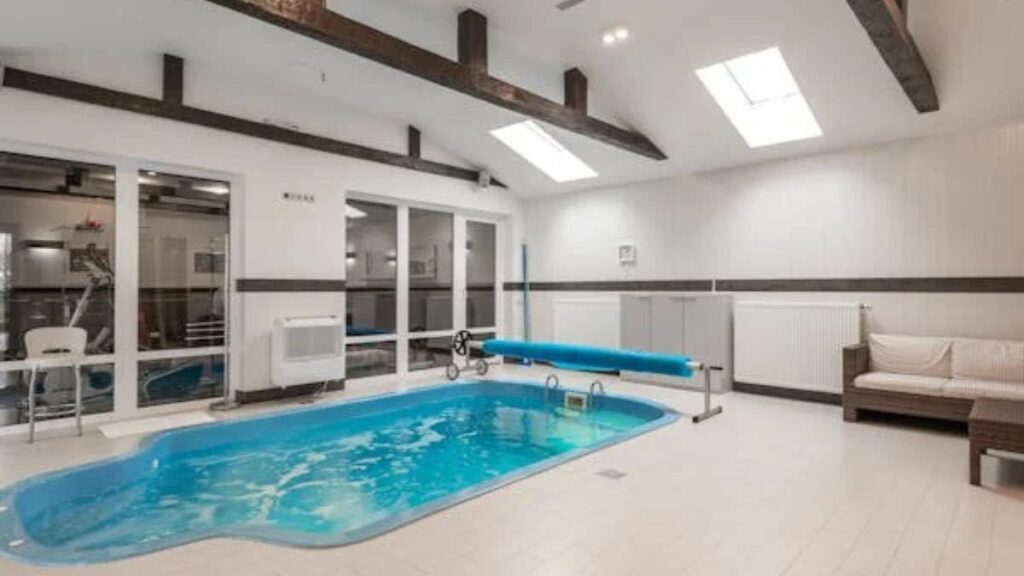Owning a pool is a wonderful luxury, especially during the hot summer months. However, maintaining a clean, safe, and functional pool can sometimes feel like a daunting task. Regular pool maintenance is crucial for the longevity of your pool and the health of swimmers. The good news is that maintaining a pool doesn’t have to be difficult or time-consuming. With the right tools, a little knowledge, and a solid routine, keeping your pool in top condition can be straightforward. In this ultimate guide, we’ll walk you through essential pool maintenance tips that will save you time and effort, ensuring your pool is always ready for a swim.

Regular Skimming and Cleaning
The first step in pool maintenance is ensuring that the water remains free of debris. Leaves, dirt, and insects can quickly accumulate on the surface of your pool, and if left unchecked, they can clog filters and affect water quality. To prevent this, you should skim the surface of the pool daily or at least a few times a week using a skimmer net. A simple, handheld skimmer tool is perfect for collecting debris from the water surface.
It’s important to vacuum your pool regularly to remove dirt and debris that settle on the bottom. You can use either a manual pool vacuum or a more convenient automatic pool cleaner. Automatic vacuums are easy to set up and do most of the work for you, ensuring your pool stays clear and clean.
However, for those who prefer a more hands-on approach, a manual vacuum gives you greater control over the cleaning process. If you want to achieve a pristine pool after cleaning, consider hiring a professional pool cleaning service periodically to ensure deep cleaning and thorough maintenance. Professional cleaners can handle more complex tasks, leaving you with a sparkling, well-maintained pool that’s always ready for a swim. Aim to vacuum the pool at least once a week to keep the water clear.
Check the Pool Filter
The pool filter is a key component in maintaining clean water. There are three main types of pool filters: sand, cartridge, and diatomaceous earth (DE) filters. Regardless of the type, it’s important to check the filter regularly to ensure it’s working properly. The filter helps remove dirt, debris, and contaminants from the water, so if it’s clogged or inefficient, your pool can quickly become cloudy or dirty.
To keep the filter in top condition, rinse it off once a week or more if necessary. For sand filters, you should backwash the system periodically to remove dirt and debris that has accumulated. For cartridge filters, take them out and hose them off to remove any built-up dirt. If you use a DE filter, make sure to add fresh DE powder after backwashing. Depending on usage, you should replace the filter media once every one to three years.
Monitor Water Chemistry
One of the most important aspects of pool maintenance is maintaining proper water chemistry. The balance of chemicals in your pool affects everything from water clarity to swimmer safety. The three key chemical factors to monitor are pH, chlorine, and alkalinity.
pH Level: The pH of your pool water should be between 7.2 and 7.8. If the pH is too high or low, it can cause skin and eye irritation, as well as reduce the effectiveness of chlorine. Test your pool’s pH at least once a week and adjust as needed by adding a pH increase or decrease.
Chlorine Level: Chlorine is essential for sanitizing your pool and killing harmful bacteria. The ideal chlorine level is between 1.0 and 3.0 ppm (parts per million). Use chlorine tablets or liquid chlorine to maintain the correct levels. If your chlorine levels are too low, algae can begin to grow, while high levels can irritate swimmers’ skin and eyes.
Alkalinity: Pool alkalinity helps stabilize pH levels. The ideal range for alkalinity is between 80 and 120 ppm. If alkalinity is too low, the pH can fluctuate, and if it’s too high, the water may become cloudy. Use an alkalinity increaser to adjust levels as necessary.
You can purchase pool testing kits to check these levels at home or take a sample of your water to a local pool supply store for testing. Based on the results, add the appropriate chemicals to keep your pool water balanced.
Clean the Pool’s Walls and Tiles
Over time, calcium deposits and grime can build up on the walls and tiles of your pool. To keep the surfaces looking fresh and to avoid buildup that can affect the water quality, clean the pool walls and tiles regularly. Use a pool brush to scrub the walls, focusing on areas where buildup tends to form, like the waterline and corners. Depending on the frequency of use, it’s recommended to brush the pool at least once a week.
For more stubborn stains or calcium deposits, you can use specialized pool cleaning products that are designed to break down buildup without damaging the surfaces. Be sure to follow the product instructions for the best results.

Pool maintenance doesn’t have to be complicated or overwhelming. By following these simple steps and sticking to a routine, you can keep your pool in pristine condition all year round. Regular skimming and cleaning, checking the pool filter, balancing the water chemistry, and maintaining the pump will ensure that your pool is always ready for a refreshing swim. A little effort now can go a long way in extending the life of your pool and ensuring that it remains a safe, enjoyable place for years to come.







